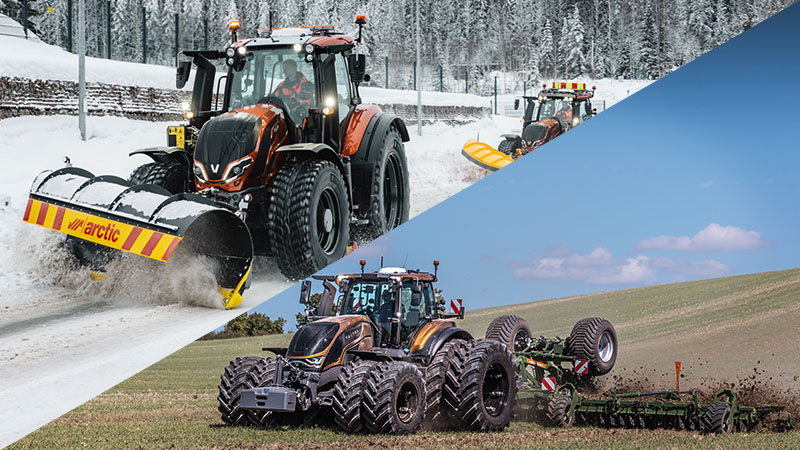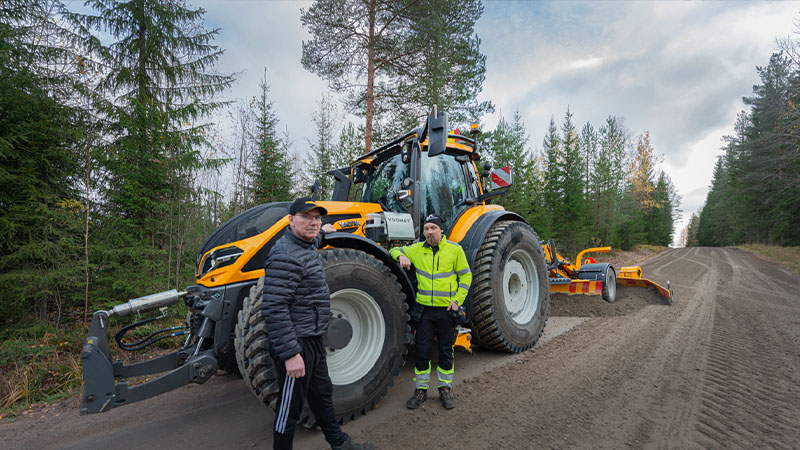In the mid-1950s the Valmet 20 tractor was a common sight on Finnish fields. At the same time Valmet was designing bigger tractors powered by diesel engines. When this design work began at the Linnavuori engine plant, engineers were faced by many alternatives: air or water cooling, direct injection or prechamber engine, number of cylinders? The engineers at Valmet ultimately decided on a three-cylinder, liquid-cooled direct injection engine.
The resulting 309D engine was the first of its kind in the world. Volvo in Sweden had previously introduced its T BM 35 and 36 models, which had similar engines, but the difference was in the maximum output engine speed: 1600 rpm for the Volvo engine compared to 2000 rpm for the Valmet 33D. Over the following decades other tractor manufactures also introduced water-cooled, high revving, multiple cylindered direct injection engines.
The Valmet 33D was unveiled in 1957. It arrived on the market in the right size and at the right time. A further improved version, the Valmet 359D, was launched in 1959. The biggest changes included the introduction of a separate hydraulic fluid chamber for the transmission and moving the dials to the dashboard. Otherwise the two models were very much the same. Prices were also competitive with the offerings of other manufacturers. These models also enabled Valmet to begin exporting tractors in sizeable quantities to China and Brazil.
Valmet knew that it had to strike while the iron was hot, so it launched another new model – the Valmet 361D – in 1960. The new look and increased output, up to 46 horsepower, once again responded to the needs of farmers. The next changes were made without changing the model designation when Valmet introduced a locking differential and cushioned driver’s seat in 1962. At the same time, an engine hour meter became standard.
Once diesel tractors had been embraced by farmers, the time was ripe to introduce a new model. The Valmet 565 was launched at the end of 1964. It still had a three-cylinder engine, but power had been increased to 52 horsepower. The biggest change was to the transmission, as all the gears with the exception of first were synchronised. There was also a synchronised range gear. Valmet tractors now stood out clearly from the competition, as reflected in sales numbers: already in 1965 the Valmet 565 was the best-selling tractor in Finland.
Diesel tractors developed rapidly in the late 1950s and early 1960s. Whereas the first three-cylinder models produced around 40 horsepower, these days they produce three times the amount of power.
Valmet diesel technical features
| Engine | Output | Speed | Tyres | Mass | |
|---|---|---|---|---|---|
| 33D | 309D / 2,7 l / 3-cyl | 37 hp / 2000 rpm | 1,2–28,5 km/h*** | front 19” rear 28” | 1 700 kg |
| 359D | 309D / 2,7 l / 3-cyl | 37,5 hp / 2000 rpm* | 1,2–28,5 km/h*** | front 19” rear 28” | 1790 kg |
| 361D | 310B / 2,7 l / 3-cyl | 46 hp / 2000 rpm** | 1,2–28,5 km/h*** | front 16” rear 24/28” | 1820 kg |
| 565 | 310A / 2,7 l / 3-cyl | 52 hp / 2250 rpm** | 1,2–30,4 km/h*** | front 16” rear 24/28/32” | 1930 kg |



